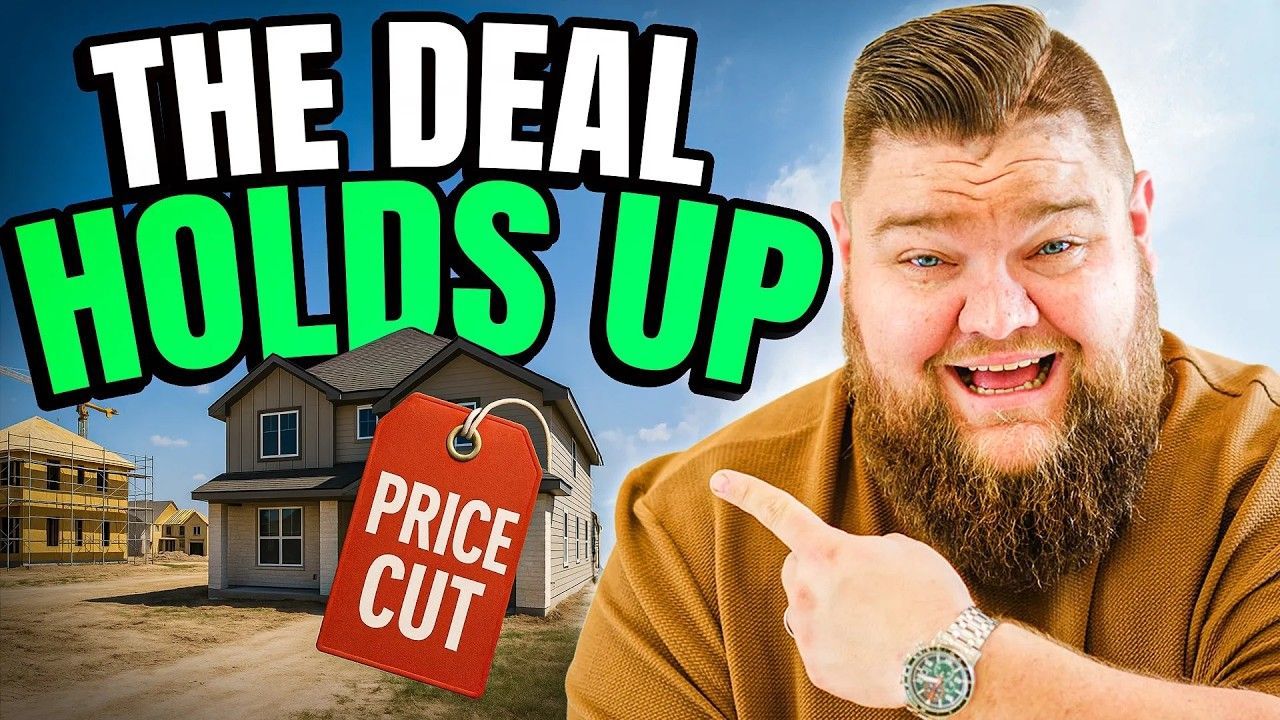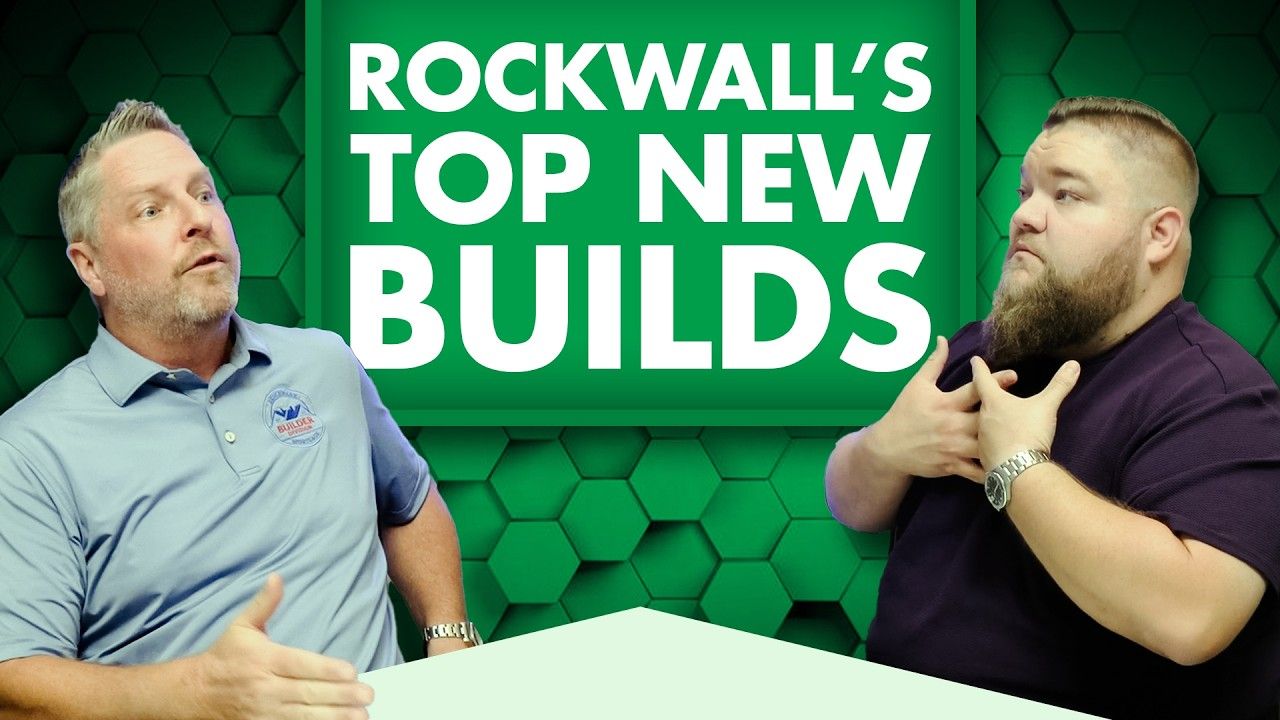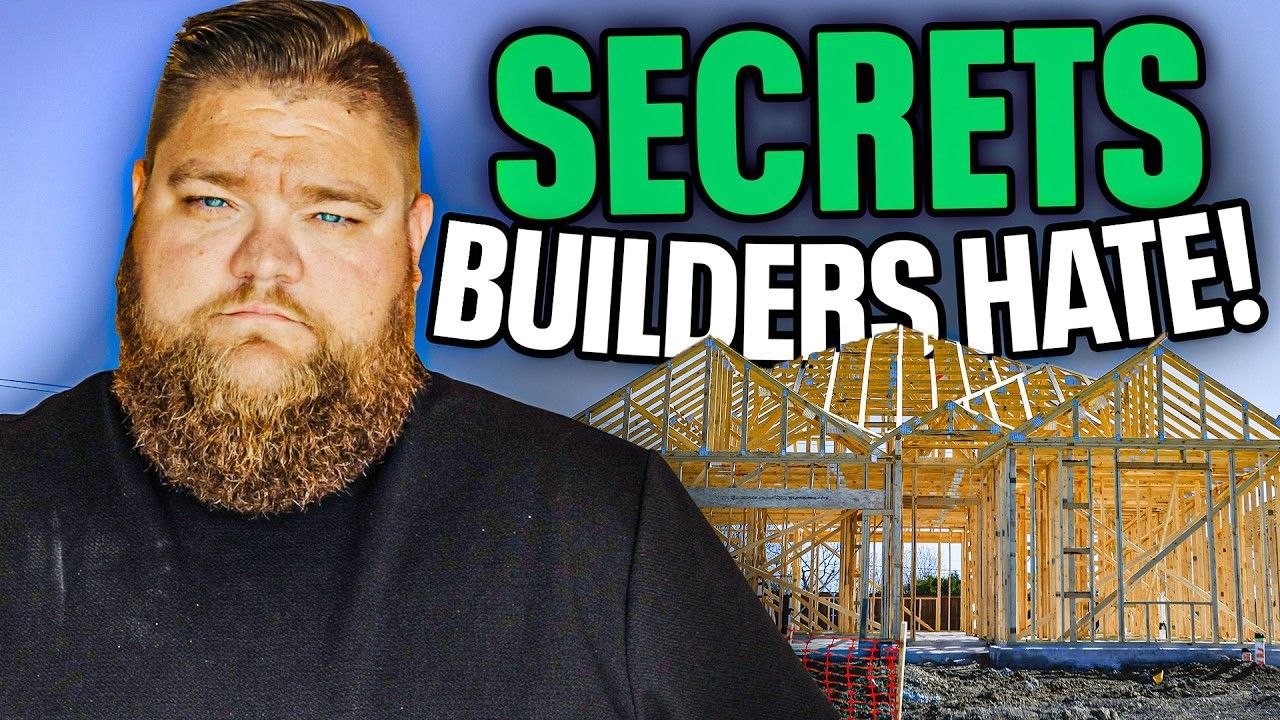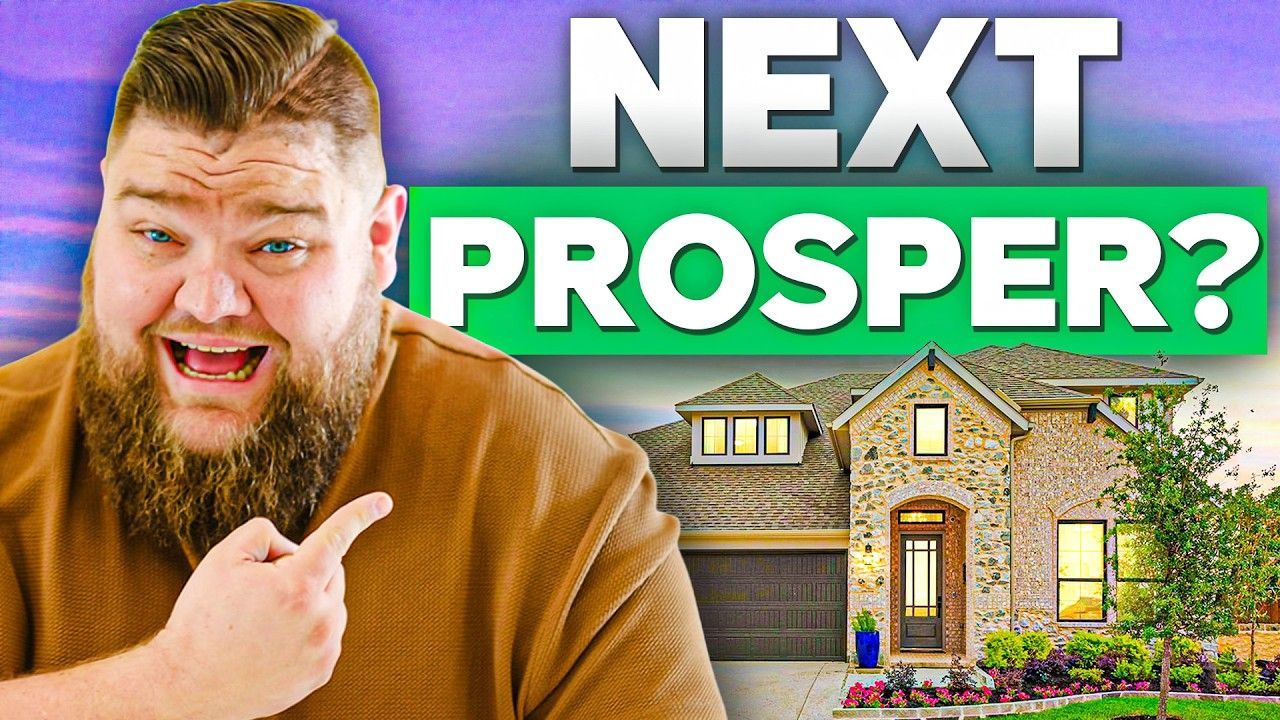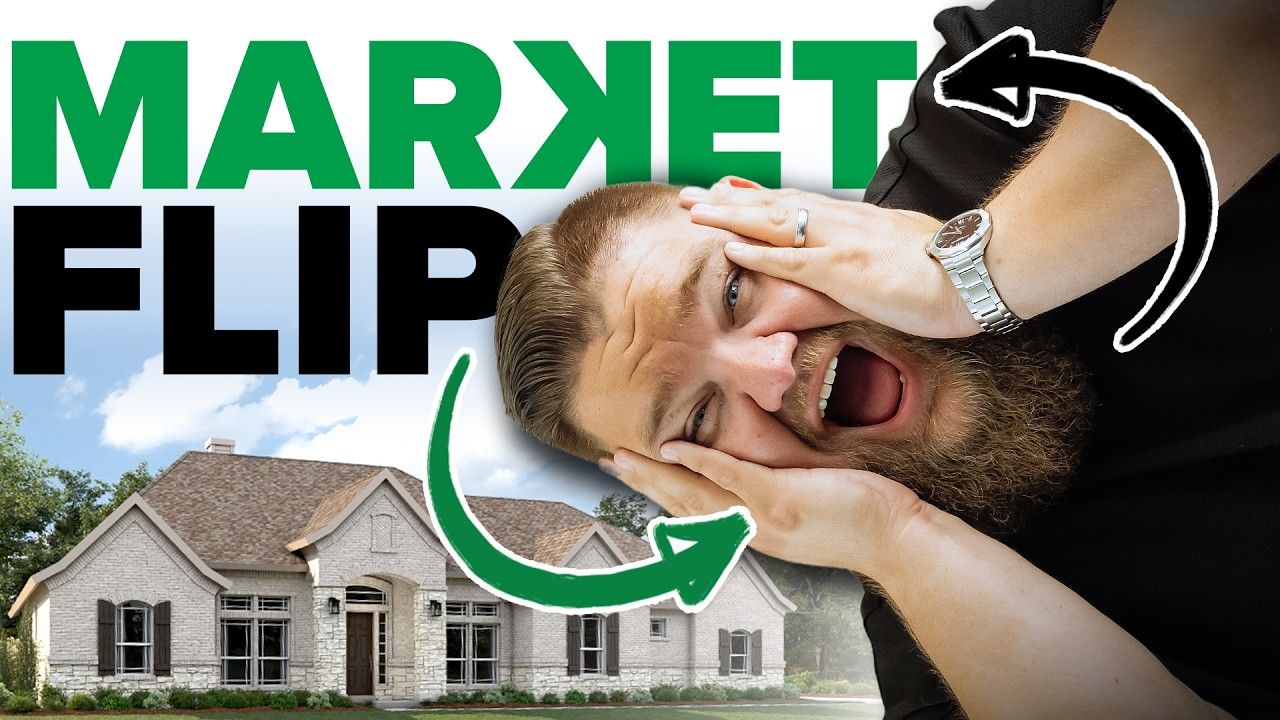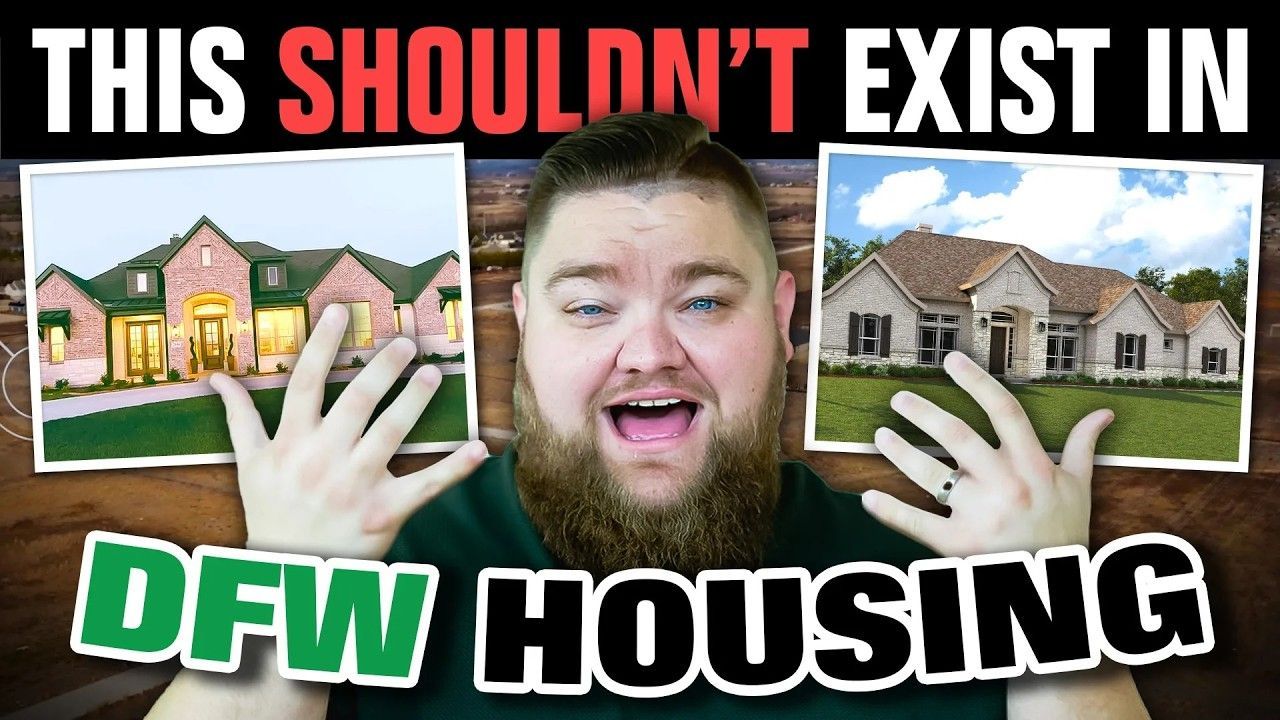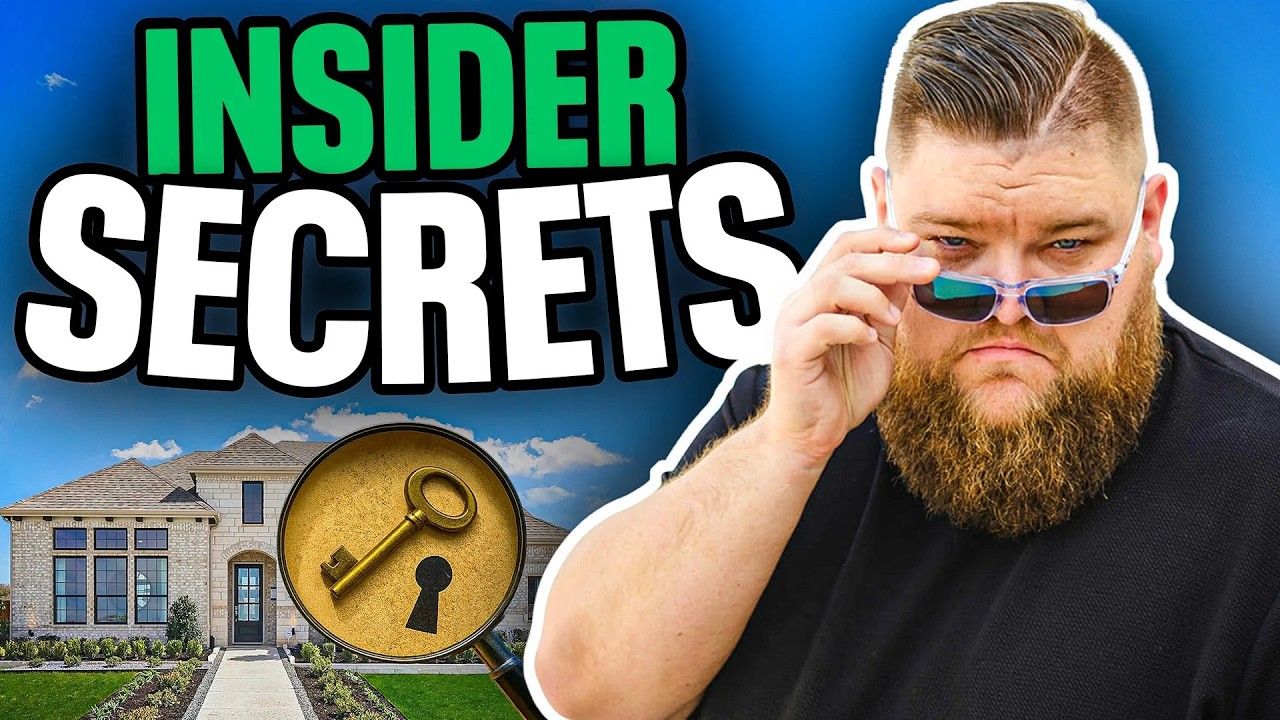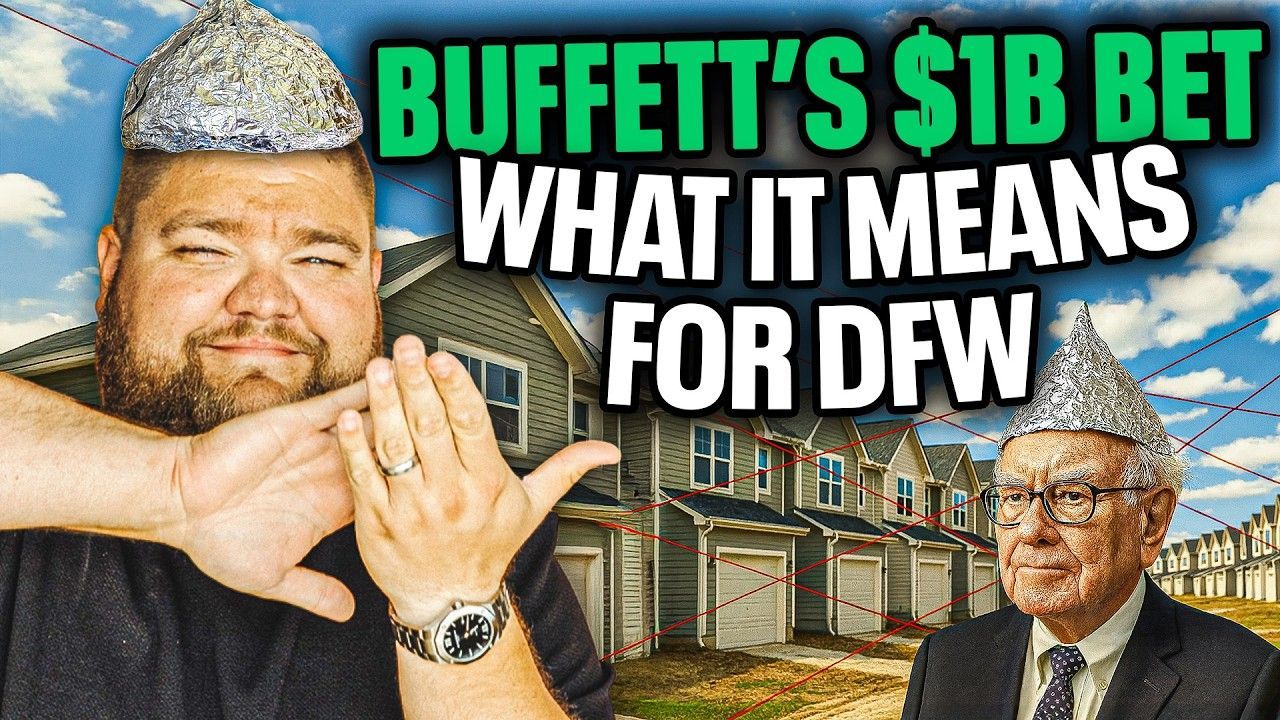How Veterans Are Scoring New Homes in DFW With VA Loans + Incentives
In this guide I break down everything I covered in my video with lending expert Jared Wilson — and I explain exactly how VA Loans + Incentives can become a true homebuying superpower for veterans shopping for new construction in the Dallas–Fort Worth area. If you served and earned this benefit, this article is for you: we’ll walk through entitlement, funding fees, builder incentives, appraisal quirks, tax exemptions in Texas, refinance options, real-world examples, negotiation tactics, and a practical checklist so you can move forward confidently.
Table of Contents
- Why VA Loans + Incentives Matter — the Big Picture
- What “Entitlement” Means — the Foundation of VA Loans + Incentives
- Top VA Loan Benefits Veterans Should Use
- Funding Fee: The VA's Upfront Cost and How Builders Help
- How Builder Incentives Stack With VA Rules
- Appraisal Realities — Tidewater, Delays, and How to Manage Them
- Texas-specific Advantages: Property Tax Exemptions and MUDs/PIDs
- IRRL — One of the Best Refinance Options Anywhere
- Example Walkthrough: How VA Loans + Incentives Look in Practice
- Common Pitfalls and How We Mitigate Them
- How We Negotiate With Builders When Using VA Loans + Incentives
- Timing and Transition Tips for Service Members Separating Soon
- Practical VA Loans + Incentives Checklist Before You Sign
- Bottom Line — Who Should Use VA Loans + Incentives
- FAQs on How Veterans Are Scoring New Homes in DFW With VA Loans
- Final Thoughts — Act on Your Benefit
Why VA Loans + Incentives matter — the big picture
VA Loans + Incentives is not just a catchy phrase — it’s a purchasing strategy. The VA loan program provides eligible veterans, active duty members, and qualifying reservists the ability to finance 100% of a purchase price with no mortgage insurance (PMI) and competitive interest rates. When you stack that product with the incentives builders often offer on new construction (closing cost contributions, rate buydowns, concession dollars, or price incentives), the combined effect can be dramatic: reduced upfront cash, lower monthly payments, and even funds to pay down debts at closing.
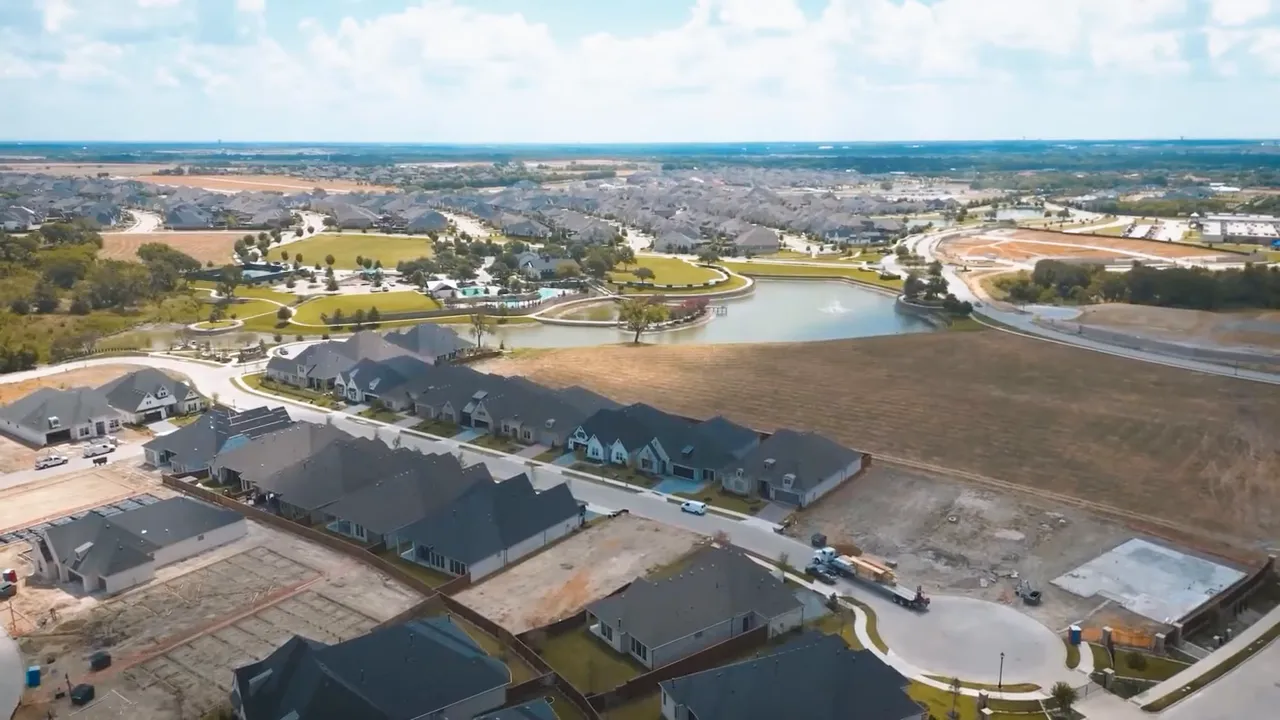
Put simply: start with the powerful financing VA provides, then let builder incentives multiply the buying power. That’s VA Loans + Incentives in action.
FIND YOUR PERFECT NEW CONSTRUCTION HOME IN DFW
What “entitlement” means — the foundation of VA Loans + Incentives
When people say they have "VA entitlement," they mean they have the VA’s backing to access the VA mortgage benefit. That entitlement is what allows eligible buyers to put 0% down — not a magic cap on home price. Entitlement gets misinterpreted because there are formulas the VA uses for guaranty amounts and the word makes it sound limited, but in practice veterans routinely buy homes at a wide range of prices with zero down using VA financing.
There are nuances — basic entitlement, bonus entitlement, and guaranty rules — but the important takeaway for most buyers is this: if you’re eligible, the VA loan product gives you 100% financing options that many other products do not.
Top VA loan benefits veterans should use
When you combine the primary VA loan features with builder offers, the result is powerful. Here are the must-know benefits you’ll see repeatedly in the VA Loans + Incentives strategy:
- 100% financing (zero down) — The VA allows qualified borrowers to finance the full purchase price, meaning no required down payment in most cases.
- No mortgage insurance (PMI) — Unlike FHA or conventional loans with low down payments, VA loans do not carry monthly mortgage insurance. Instead, the VA assesses an upfront funding fee (more on that below).
- Competitive interest rates — VA and other government-backed loans (FHA, USDA) often have slightly lower starting rates compared to conventional loans because of the government guarantee backing the loan.
- Funding fee options — The VA funding fee is an upfront cost that can be financed into the loan, paid at closing, or sometimes paid by the seller/builder.
- Refinance friendliness (IRRRL) — VA’s Interest Rate Reduction Refinance Loan (IRRRL) is a streamlined, low-document refinance option that often requires little more than evidence you’re current on payments and that the refinance provides a net tangible benefit.
Funding fee: the VA’s upfront cost and how builders help
The VA funding fee acts similarly to mortgage insurance in that it protects the program when a borrower has no down payment. Key points:
- Veterans with a service-connected disability rating of 10% or greater typically qualify for a funding fee waiver. That means truly zero down and no funding fee — powerful savings immediately.
- If you must pay a funding fee, you can often finance it into the loan, effectively allowing you to borrow up to 103% of the purchase price.
- Builders (or sellers) can pay closing costs, and in many cases can pay funding fees or buy down the interest rate for you. That’s where the VA Loans + Incentives advantage becomes tangible: a builder might cover the funding fee and closing costs while also offering a temporary rate buy-down.
How builder incentives stack with VA rules
Not all seller contributions are created equal. The VA loan program outlines how much an interested party (like a builder) can contribute, and there are specific categories:
- Seller-paid closing costs — These cover taxes, title, fees, and typical transactional costs.
- Concessions — These might be additional items like paying off debts, covering lease buyouts, or providing non-transactional credits.
Under general guidelines for many loan types, “interested party contributions” max out at around 6% (and 9% in some high down payment situations). The VA structure is more generous in practice by separating seller-paid costs (often up to 4%) and concessions (another 4%), effectively providing more flexibility — and more usable dollars for you — than a standard conventional buyer often gets.
What does that mean for you? If a builder pays closing costs and still has additional concession dollars left, those additional dollars can be applied toward paying off credit cards, pre-paying certain items, or even offsetting monthly expenses. It’s legal, and with good structuring it doesn’t create harmful debt-to-income complications because the credits can be applied in ways that shore up your qualifying ratios.
Appraisal realities — Tidewater, delays, and how to manage them
Every loan program has its quirks; for VA, the appraisal process can be the most fiddly part. Important things to know:
- VA appraisers must be VA-certified; your appraisal is handled through an appraisal management company that assigns a VA-approved appraiser.
- Geography and appraiser familiarity matter. The management system occasionally assigns an appraiser from outside the immediate market, and that appraiser might have a harder time finding comparable sales — which can lead to a low appraisal.
- If an appraiser is struggling with comparables, they initiate a Tidewater Notification. This is essentially a heads-up that there’s difficulty establishing the value and it opens a process where the seller, buyer, lender, and real estate agent can supplement the appraiser with additional info.
- If the appraisal ultimately comes in low, VA buyers have protections: you can cancel without penalty, you can make up the difference in cash, or you can write a letter to the VA requesting reconsideration of value (buyers have successfully used this route to get appraisals reconsidered).
Because you can’t rush a VA appraisal the way you sometimes can for conventional appraisal truespeed services, timelines may be longer. Plan for that. If you’re on a hard deadline, work closely with your lender and agent to select communities and builders where VA appraisals have historically gone smoothly.
Texas-specific advantages: property tax exemptions and MUDs/PIDs
If you’re buying in Texas, there are additional layers of benefit for veterans that can dramatically change long-term affordability — and they matter when you evaluate VA Loans + Incentives.
- Disability-based property tax exemptions: In Texas, veterans with a service-connected disability rating can receive property tax exemptions that reduce assessed value. At 100% disability, many veterans receive a complete exemption for school taxes and some other taxing entities (meaning major tax savings). Even partial ratings produce meaningful reductions.
- Homestead exemption: VA loans are for primary residences. That means most VA purchasers in Texas will qualify for homestead exemptions, which lower taxable value.
- MUDs and PIDs: Municipal Utility District (MUD) taxes and Public Improvement District (PID) assessments are common in new developments. Some tax exemptions (like disability-based exemptions) may not remove a PID portion — know which assessments are covered. For example, a PID might still be owed even if school taxes are exempted — but MUD fees in some cases are removed at 100% disability depending on local rules. Always review the tax breakdown for the neighborhood you’re buying in.
IRRRL — one of the best refinance options anywhere
VA’s Interest Rate Reduction Refinance Loan (IRRRL) is a streamlined refinance that’s exceptionally borrower-friendly. If you currently have a VA loan and rates drop (or if a builder gave you a temporary buy-down and you want to lock a lower rate later), the IRRRL can often be done with minimal documentation.
Key points about IRRRL:
- There’s typically less underwriting and documentation because the VA assumes borrowers who have been timely on payments deserve an easier path to a lower rate.
- You must have owned the home for a minimum period (just over six months is a typical threshold) and show a net tangible benefit (usually a lower payment).
- Because it’s streamlined, IRRRLs can close faster and with less hassle than conventional refis.
Example walkthrough: how VA Loans + Incentives look in practice
Let’s walk through a practical example using a new construction listing in Rockwall area one of my favorites. Numbers below are ballpark estimates to illustrate how VA Loans + Incentives change the math — always consult a lender (like Jared Wilson) for exact quotes.
- List price (example): $589,238
- Estimated interest rate assumption (example): 4.88% — VA often has slightly lower starting rates than conventional products
- Taxes (example): 2.0% tax rate for the area — note that disability exemptions can dramatically lower this amount in Texas
With a VA loan you may be able to finance 100% of the purchase and roll any funding fee into the mortgage (or have the builder pay it). Builder incentives could include seller-paid closing costs and additional concessions. When you compare the monthly payment between VA and a conventional loan where the buyer must put 5% down and carry PMI, the VA payment can be hundreds of dollars lower each month — often $400–$500 in the example we reviewed.
Additionally, because builders are offering aggressive incentives in many markets, new construction VA buyers frequently recover earnest money deposits through builder credits. That means real cash outlay at contract may be low and refunded at closing. Put all of that together — 0% down, no PMI, builder credits covering closing costs or the funding fee — and the net position is powerful for veterans.
Common pitfalls and how we mitigate them
No program is perfect. Here are the common issues with VA Loans + Incentives and how to handle them:
- Appraisal timing and assignment delays: You can’t rush VA appraisals through some vendors. Mitigation: choose lenders and agents experienced with VA appraisals, pick builders with a history of successful VA appraisals, and factor extra time into your timeline.
- Appraisal comparables scarcity: If the area is new or unique product types dominate, appraisers may struggle to find comps. Mitigation: be ready to supplement with additional market data, comparable listings, and the buyer’s letter requesting reconsideration of value when appropriate.
- Misunderstanding of seller contribution rules: Some buyers and builders assume the VA works exactly like conventional contribution rules. Mitigation: work with lenders who know VA’s specific separation of seller-paid costs vs. concessions — this is where real value can be unlocked.
- Funding fee confusion: New buyers often don’t realize the funding fee can be financed or that certain disability statuses waive it. Mitigation: check your funding fee status early and confirm whether the builder is willing to cover it.
How we negotiate with builders when using VA Loans + Incentives
Negotiating with builders is different than buying resale. Builders often have more flexibility in structuring incentives. Here are actionable negotiating strategies when you plan to use VA Loans + Incentives:
- Start by documenting your VA eligibility and the funding fee situation. If you have a disability waiver, that’s a strong negotiating point.
- Ask the builder for seller-paid closing costs first — these are common and often expected. If the builder covers all closing costs, ask how they can allocate remaining incentive dollars (concessions, rate buydown, or payoff of debts).
- Propose a temporary or permanent rate buy-down paid by the builder. A temporary buy-down can make initial years more affordable; a permanent buy-down uses discount points which the builder can sometimes fund.
- Request excess concession dollars to be applied toward closing out credit card debt or other qualifying debts, which may improve your debt-to-income ratio and help you qualify for a higher payment if you choose.
- Insist on transparent paperwork showing how each builder credit is applied — seller-paid costs, concessions, and any separate incentives — so your lender can underwrite accurately.

Timing and transition tips for service members separating soon
If you’re transitioning out of the military within months, you aren’t barred from using a VA loan — but underwriters look at ability to repay. That is the core mortgage evaluation principle.
Practical steps:
- Document your separation date and any job offers or employment prospects. A separation doesn’t disqualify you; lenders will evaluate stability and your ability to repay when overlap occurs.
- Consider timing a builder contract so that the build and your job start dates align. Six months can overlap during construction; lenders understand the timeline of new builds.
- Work with a lender experienced with servicemember transitions — they can help structure proofs of income and advise how separation pay or upcoming civilian job offers factor into qualifying.
Practical VA Loans + Incentives checklist before you sign
- Confirm VA eligibility and funding fee status (including any disability waiver).
- Obtain pre-approval from a lender experienced with VA and new construction.
- Request a detailed breakdown of expected seller-paid costs and concessions from the builder.
- Ask the builder about their history with VA appraisals and whether they’ve worked with VA appraisers locally.
- Review neighborhood tax breakdown for MUD/PID and ask which portions are covered by disability exemptions.
- Plan contingencies for appraisal Tidewater notifications and potential delays.
- Document any employment transition and present any job offers to the lender.
- Confirm earnest money protections and whether builder incentives exceed earnest deposit so you can get a refund at closing.
FIND YOUR PERFECT NEW CONSTRUCTION HOME IN DFW
Bottom line — who should use VA Loans + Incentives
If you’re eligible for a VA loan, using VA Loans + Incentives while buying new construction in DFW is often the smartest move to maximize buying power. Reasons:
- It reduces or eliminates upfront cash needs.
- It removes monthly PMI payments that conventional buyers with low down payments would face.
- Builder incentives can be used cleverly to lower monthly payments, pay off debts, or cover closing costs without adding out-of-pocket expense.
- Texas property tax exemptions for disabled veterans significantly increase ongoing savings and effective buying power.
DOWNLOAD YOUR FREE RELOCATION GUIDE
FAQs on How Veterans Are Scoring New Homes in DFW With VA Loans
Who is eligible for a VA loan and how do I check my entitlement?
VA loan eligibility is based on your service history — active duty, reserves, or qualifying national guard service — and whether you have remaining entitlement. The VA issues a Certificate of Eligibility (COE) that documents your entitlement. Your lender can pull your COE for you or you can request it directly from the VA. If you’ve served and haven’t used your entitlement, you likely still have it available.
Can a builder pay my VA funding fee or closing costs?
Yes. Builder-paid closing costs are common, and in many cases, builders can pay the VA funding fee or contribute funds that cover funding fee and other closing costs. The VA allows seller-paid costs and additional concessions that together provide more flexibility than some conventional rules, making builder-paid funding fees possible in many deals.
What happens if the VA appraisal comes in low?
If the VA appraisal is low, you have multiple options: negotiate with the builder/seller, pay the cash difference, cancel the contract, or submit a buyer letter and supporting market evidence to request an appraisal reconsideration. The VA’s Tidewater process is designed to surface value issues early so that additional information can be provided to support the sales price.
Will a VA loan cover new construction and inventory homes?
Yes. VA loans can be used for new construction and builder inventory homes as long as the property will be your primary residence. Many builders welcome VA buyers, especially when their loan teams and sales staff are experienced with VA processes.
Are VA rates lower than conventional rates?
VA loans typically start with slightly lower interest rates than comparable conventional loans because the VA guaranty lowers lender risk. However, the exact rate you receive depends on market conditions, your credit, lender pricing, and whether the builder pays points or funds a rate buy-down as part of the VA Loans + Incentives package.
Can I refinance later if rates drop?
Yes. The VA IRRRL (Interest Rate Reduction Refinance Loan) is one of the most streamlined refinance options available. It typically requires less documentation and underwriting than conventional refinances as long as you’ve been current on your mortgage payments and the refinance yields a net tangible benefit.
How does my disability rating affect taxes and fees?
A service-connected disability rating can lead to a VA funding fee waiver and property tax exemptions in many states, including Texas. At 100% disability in Texas, veterans may be exempt from certain property taxes; partial ratings provide proportional exemptions. Always verify local taxing authority rules for exact exemptions and how they apply to MUDs/PIDs.
What should I ask my lender and agent before signing a builder contract?
Ask whether the lender has experience with VA appraisals and new construction, confirm exactly which builder incentives will be applied and how, verify whether the funding fee will be financed or covered, and ask about timelines for appraisal and closing. Make sure your agent negotiates clear documentation showing how builder credits are allocated so underwriting is smooth.
If I’m separating from service soon, can I still buy now?
Yes, you can still buy during separation. Underwriting centers on your ability to repay. If you can show stable employment prospects, a job offer, or continued income streams, the lender can often qualify you. Many new construction timelines overlap with job transitions, so coordinate closely with your lender and builder.
Final thoughts — act on your benefit
VA Loans + Incentives represent a highly underused advantage for eligible veterans. Between zero down options, no monthly mortgage insurance, favorable refinance programs, generous seller contribution rules, and Texas-specific tax savings for disabled veterans, the case is simple: if you’re eligible, use it.
If you’re looking at new construction in DFW, reach out to us at 469-707-9077 , a VA-experienced lender and agent early in your process. Experienced teams know which builders handle VA appraisals well, how to structure seller credits, and which neighborhoods have tax assessments that might affect your long-term costs. When paired with wise negotiation and the right lender, VA Loans + Incentives can put you in a brand-new home with better monthly cash flow and far less out-of-pocket expense than many people expect.

Zak Schmidt
From in-depth property tours and builder reviews to practical how-to guides and community insights, I make navigating the real estate process easy and enjoyable.


